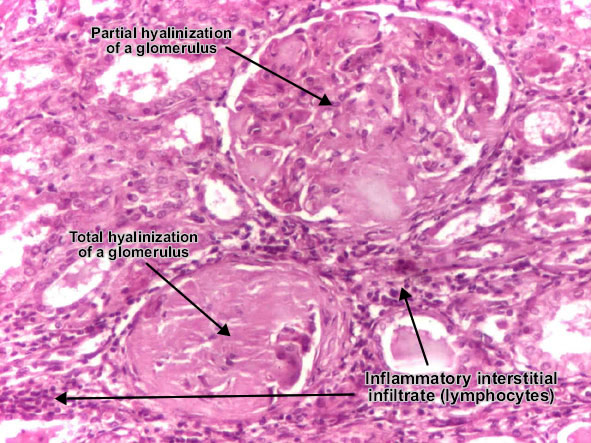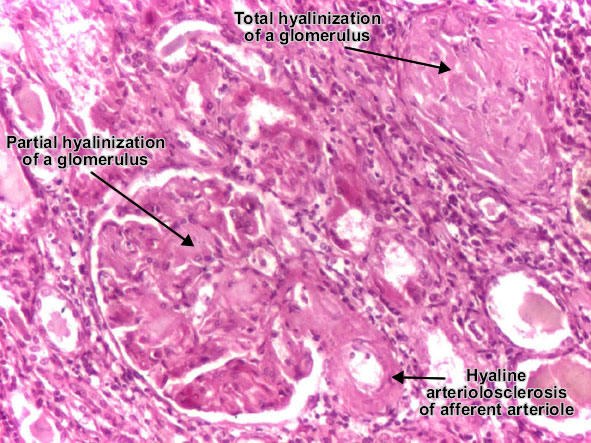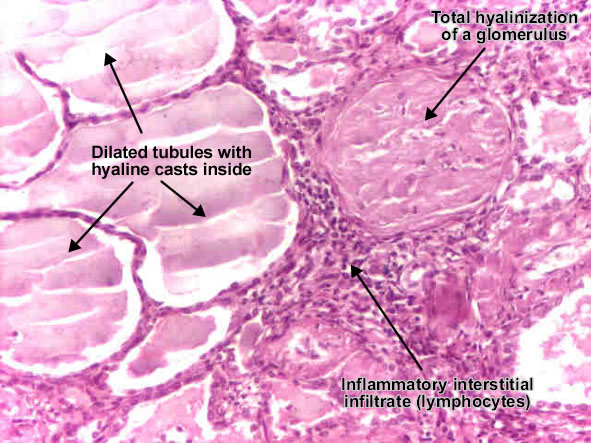Chronic glomerulonephritis
Chronic glomerulonephritis represents the end-stage of all glomerulonephritis with unfavorable evolution. This general (glomerular, vascular and interstitial) affection constitutes the so-called "end stage kidney". In most cases, it is associated with systemic hypertension.

Chronic glomerulonephritis. The majority of the glomeruli are affected. Depending on the stage of the disease, they may present different degrees of hyalinization (hyalinosclerosis - total replacement of glomeruli and Bowmann's space with hyaline). The hyaline is an amorphous material, pink, homogenous, resulted from combination of plasma proteins, increased mesangial matrix and collagen. Totally hyalinised glomeruli are atrophic (smaller), lacking capillaries, hence these glomeruli are non-functional. Few glomeruli may still present changes which permit to discern the etiology of chronic glomerulonephritis. Obstruction of blood flow will produce secondary tubular atrophy, interstitial fibrosis and thickening of the arterial wall by hyaline deposits. In the interstitium is present an abundant inflammatory infiltrate (mostly with lymphocytes). (Hematoxylin-eosine, ob. x20)


Chronic glomerulonephritis. Functional nephrons have dilated tubules, often with hyaline casts in the lumens. (Hematoxylin-eosine, ob. x20)

